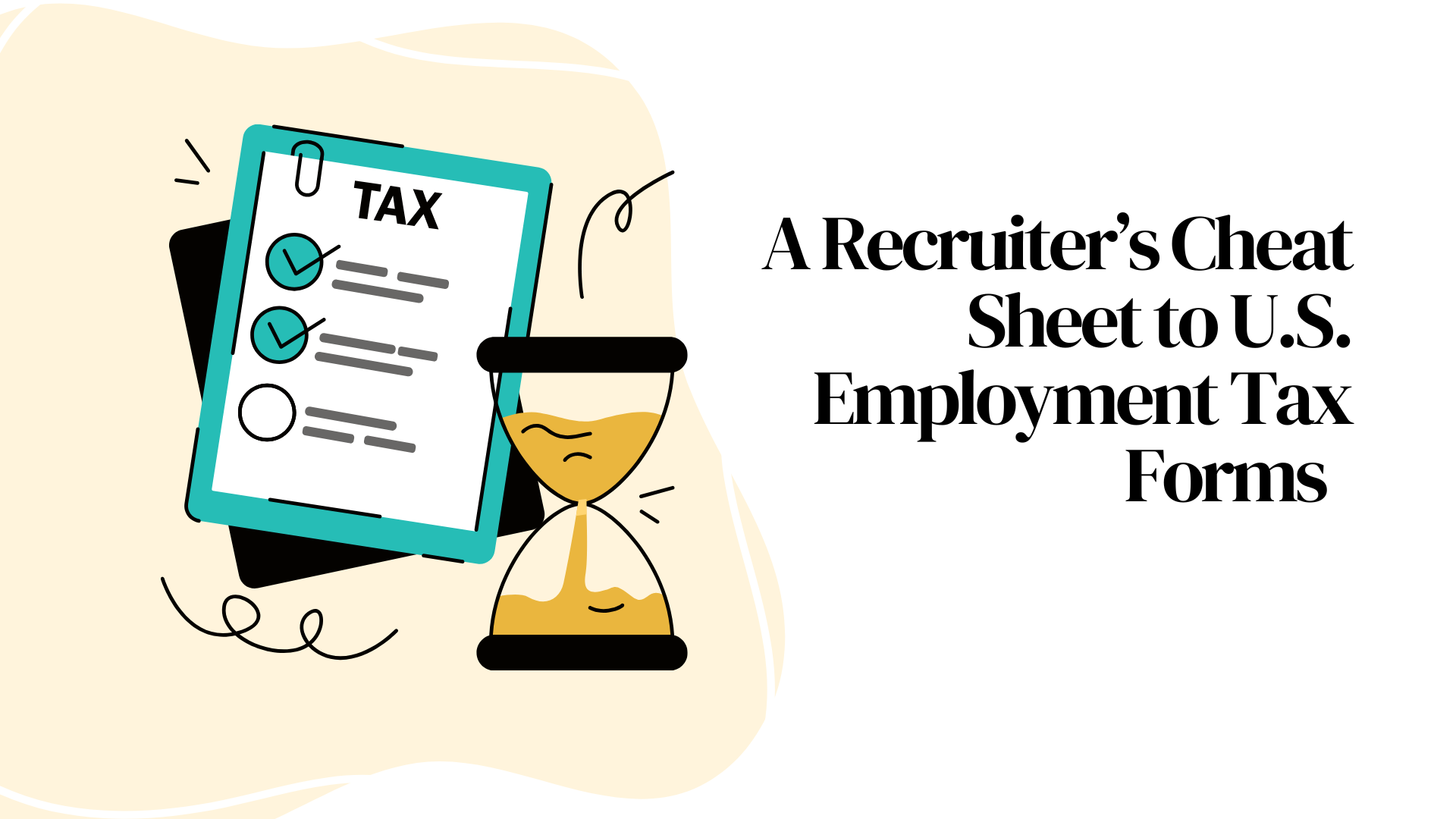For recruitment firms placing talent across the U.S., understanding the basics of U.S. tax forms isn’t just about nice to have, it’s about compliance and credibility and avoiding hefty penalties.
You don’t need to be a tax and payroll expert but knowing what these forms are and why they matter helps you reassure that everything is handled properly.
Let’s break down the key U.S. tax forms your candidates and clients will encounter, and how working with an EOR can simplify the entire process.
The W-4: Setting Up Employee Withholding
Who completes it: The employee
Purpose: Determines how much federal income tax to withhold from each paycheck
When a new U.S. employee is onboarded, they fill out a Form W-4. This form tells the employer how much tax to withhold based on factors like marital status, dependents, and additional income. It ensures employees have the right amount of tax withheld from their paychecks throughout the year.
Federal W-4
The Federal W-4 applies to all employees in the U.S. and determines how much federal income tax is withheld. It’s filed with the IRS and is the version most people are familiar with.
Employees complete this form when they start a new job or need to adjust their withholding—for example, after a major life change like marriage, having a child, or taking on a second job.
State W-4
In addition to the federal form, some states require their own state-specific W-4 to calculate state income tax. These forms can differ from the federal version in both layout and calculation rules. For example, states like California, New York, and Illinois have unique forms, while states such as Texas, Florida, and Washington don’t require one at all because they don’t levy state income tax.
Partnering with an Employer of Record (EOR) helps ensure compliance across all levels. The EOR manages both federal and state withholding forms, verifies accuracy, and ensures timely remittance of taxes to the appropriate authorities. This centralized approach minimizes administrative risk and ensures every placement begins with a compliant payroll setup, regardless of location.
The W-9: For Anyone Who’s Not an Employee
Who completes it: The contractor
Purpose: Provides taxpayer identification information to the payer
If your client wants to engage an independent contractor rather than an employee, that person will complete a W-9 form. It includes their name, address, and Tax Identification Number (TIN).
However, a common risk here is misclassification, which is why you should ensure your contractor decides how they want to be onboarded. The IRS has strict guidelines and getting it wrong can mean back taxes and penalties.
An EOR can help you streamline the process.
The 1099: Reporting Contractor Income
Who completes it: The payer (EOR or client, depending on setup)
Purpose: Reports how much was paid to a contractor in a tax year
When a contractor earns $600 or more from a single payer in a year, that payer must issue a Form 1099-NEC to both the contractor and the IRS.
If the contractor was engaged through an EOR, the EOR handles all reporting. You don’t have to file anything – and no one’s left chasing forms at year-end.
The EOR manages all annual filings and reporting for U.S.-based contractors, keeping things compliant and stress-free.
The Consequences of Getting It Wrong
Failing to properly complete or file tax forms like the W-4 or 1099 can lead to costly penalties for both employers and contractors.
- For W-4 errors: Employers are responsible for ensuring accurate withholding. If too little tax is withheld because of a missing or incorrect W-4, the employer may be liable for back taxes, interest, and penalties from the IRS. Employees could also face a surprise tax bill at year-end.
- For 1099 forms: Businesses that fail to issue or file required 1099-NEC forms can be fined between $60 and $310 per form, depending on how late they are submitted – with a maximum annual penalty of over $1.2 million for small businesses. Intentional disregard of filing requirements can raise penalties even higher.
How the EOR Makes It All Simple
When you work with an EOR, they act as the legal employer, which means that they will own the legal complexity of navigating federal, state and local rules that may sometimes overlap.
A good EOR will handle all onboarding forms, withholdings and filings, and ensure compliance with IRS and Department of Homeland Security requirements, so you can focus on sourcing great talent and nurturing client relationships.
Want to expand your recruitment operations into the U.S. without the compliance headaches?
Talk to our team about how our EOR platform can support your growth.
